If you want a simple, fresh, and light dinner, this is the recipe for you! Mahi Mahi cooks in lime juice and is served with vegetables and coconut milk for a Fijian dish you’ll love.
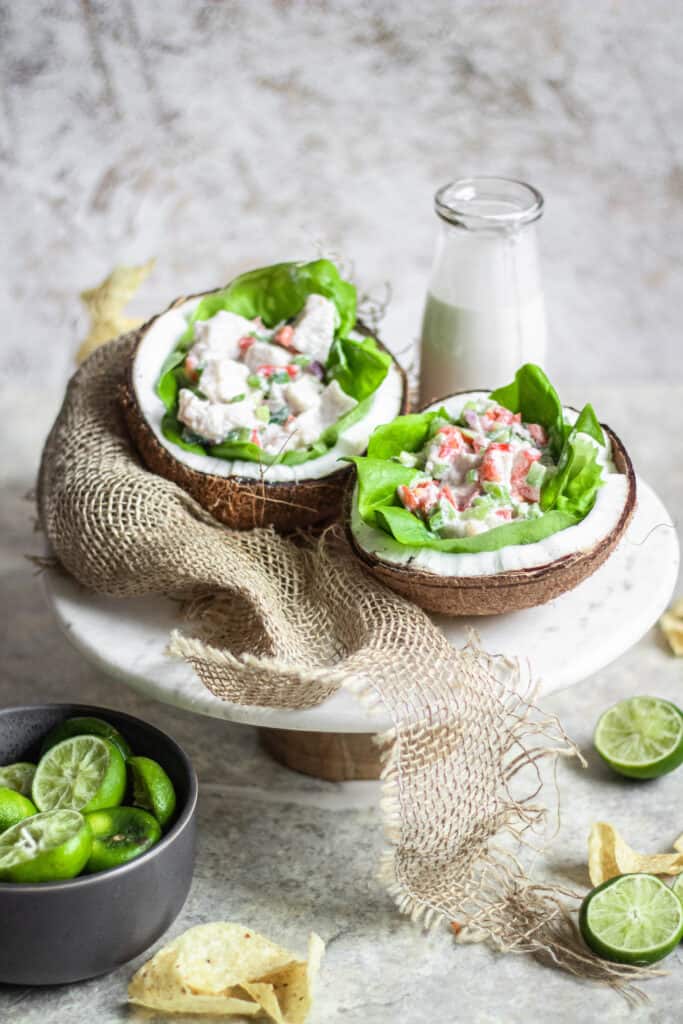
Recipe Origins
This recipe is called Kokoda in Fiji. Fijian Kokoda is a form of Fish Ceviche that is served with coconut milk in order to balance out the acidity of the lime juice!
According to Robert Oliver, a celebrity chef raised in Fiji, this dish is traditionally made with “walu” or Spanish Mackerel, lime juice, chilies, onions, and seawater.
Seawater is no longer as common and has been replaced by coconut milk in more recent years!
Why Make this Recipe
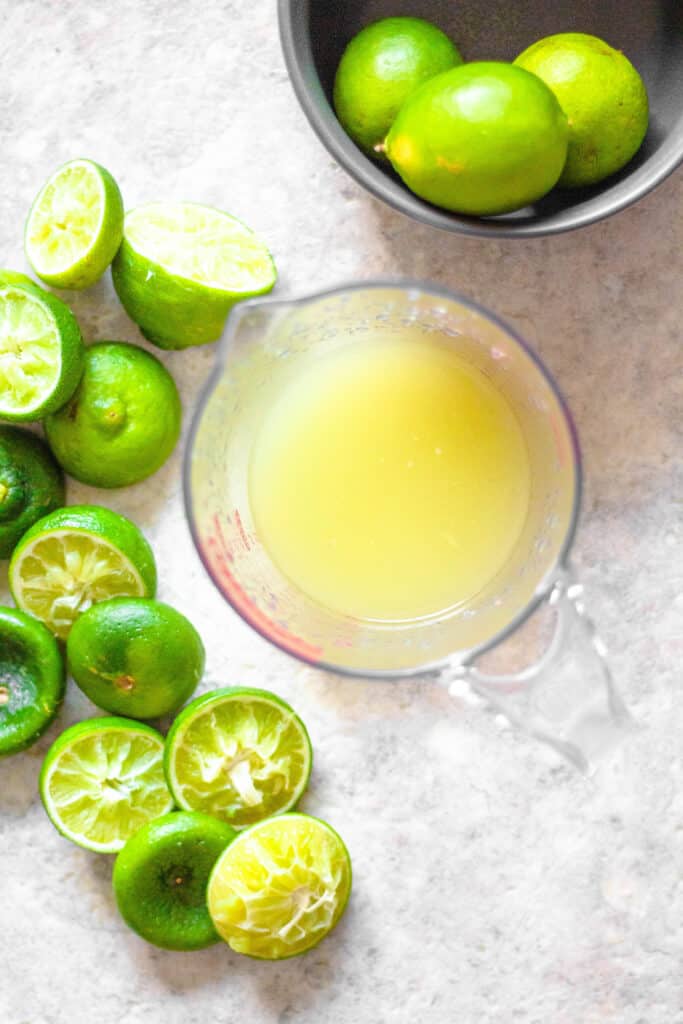
- Almost No Work: Aside from chopping some vegetables, the work associated with making this dish is minimal! Simply add the fish into a bowl, squeeze with some citrus, and wait.
- “Travel” to Fiji: I’m sure we’ve all dreamed of visiting the white sandy beaches and teal ocean water of Fiji. If you’ve ever wanted to see what Fiji is like, this is a great way to do so from the comfort of your kitchen! Okay, it might not be paradise… But close your eyes and it’s close enough.
- Fresh and Light: We’ve eaten a lot of heavy meals in our house lately, so when I made this Kokoda for dinner, we were in LOVE with how light and fresh it tasted! It felt good to have some yummy veggies and healthy fats in our bodies. You’ll love how healthy and simple this meal is!
What Do I Need to Make this Recipe?
Ingredients
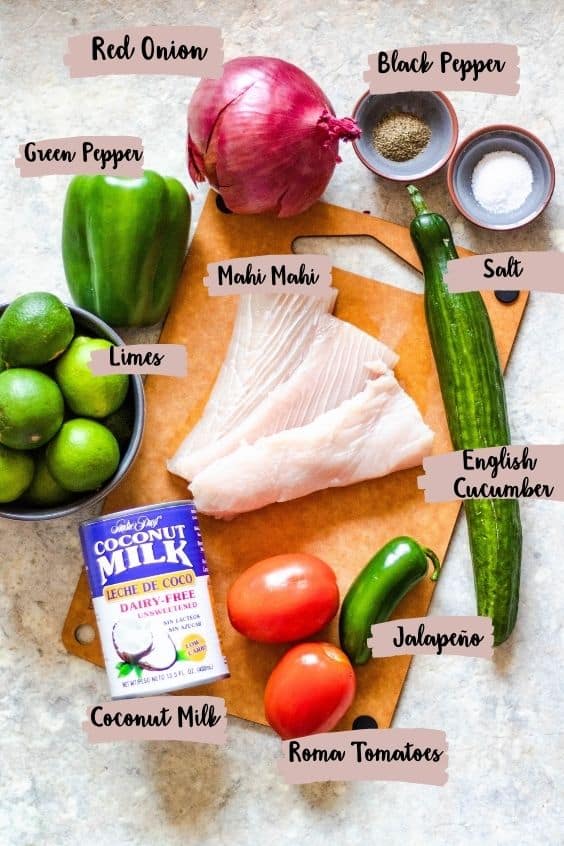
- Mahi Mahi: Use boneless, skinless cuts. Mine came frozen and I thawed them in the fridge before using (see below for info on how to choose safe fish)
- Lime Juice: Fresh squeezed
- Coconut Milk: Canned. You can also use coconut cream
- Produce: Tomatoes, Red onion, English cucumber, Parsley, Jalapeño, Coconut (optional)
- Seasoning: Kosher salt, Black pepper
Tools
- Mixing Bowls: I used these Stainless Steel bowls.
- Cutting Board: Using a wooden cutting board is best for caring for your knives! This brand has three different sizes and also has a juice groove to keep the juice from spilling over the sides of the board.
- Knives: Make sure that you’re keeping your knives sharp!
- Wine Opener (Optional): The wine opener is only if you will be serving the dish in a coconut half
How to Make this Recipe
[adthrive-in-post-video-player video-id=”BqnJDMww” upload-date=”2021-08-01T23:51:49.000Z” name=”Fish Ceviche Recipe” description=”If you want a simple, fresh, and light dinner, this is the recipe for you! Mahi Mahi cooks in lime juice and is served with vegetables and coconut milk for a Fijian dish you’ll love. ” player-type=”default” override-embed=”default”]
Step 1: Cook the Fish
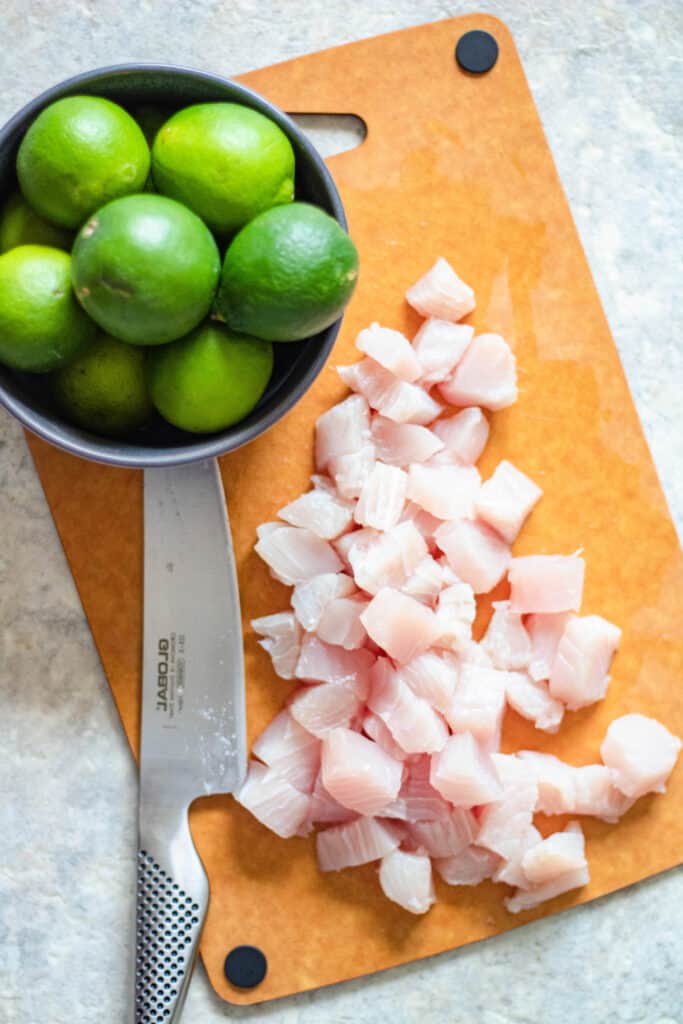
Cut the Mahi Mahi into cubed, bite-sized pieces. Place the pieces in a bowl and then cover them with the squeezed lime juice. Cover and place in the fridge for about 6 hours.
You will know the fish is cooked when the skin has turned white and opaque. You can cut into one of the pieces of fish to make sure that it is this color all the way through! Read more about How Long Does Ceviche Take Take To Cook to get more details.
Step 2: Finish the Fish Ceviche Recipe
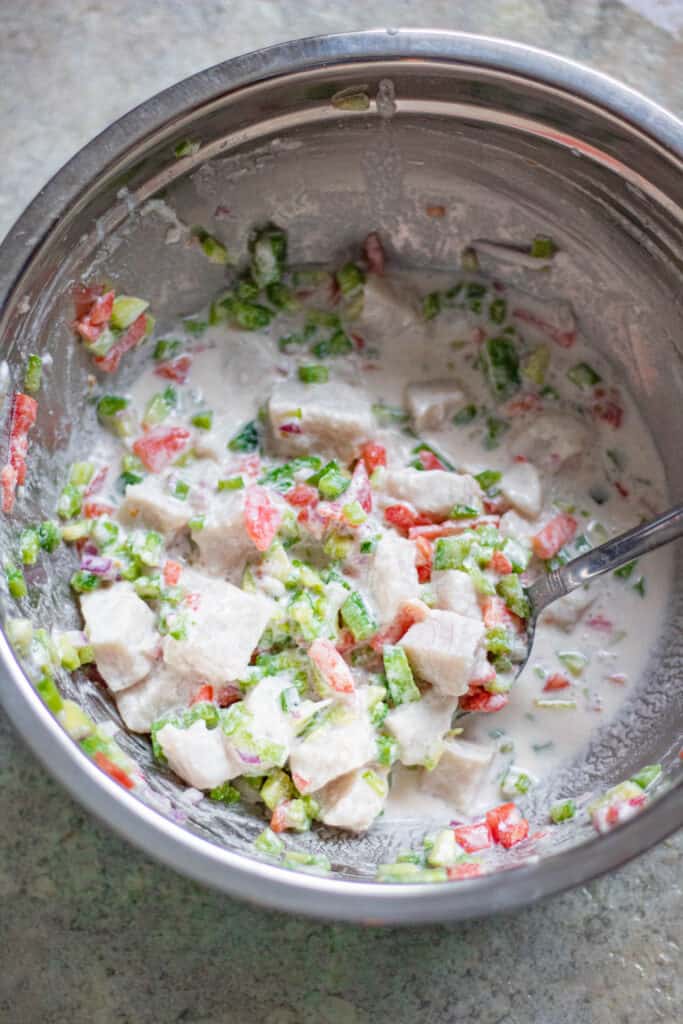
When the fish is cooked, add the coconut milk and the diced vegetables. Stir, then season with salt and pepper to taste.
Spoon into bowls or coconut halves. Enjoy!
Expert Tips
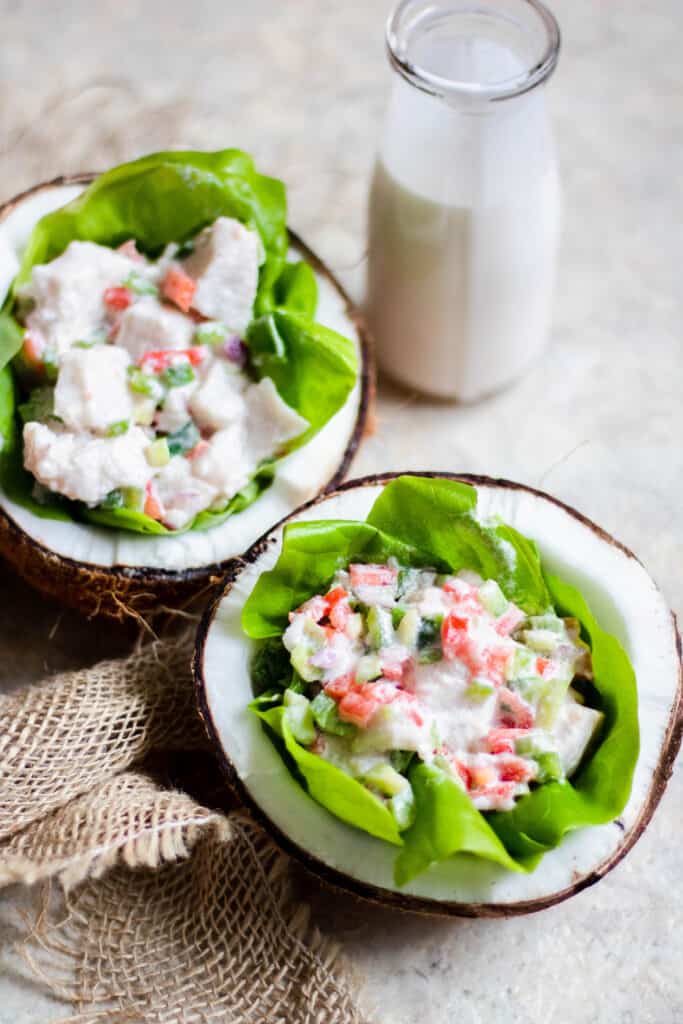
- Traditionally in Fiji, Kokoda is served in the shells of a coconut. This is not required, but certainly a fun choice if you want to go through the trouble! I used Melissa’s Quick Crack Coconut, as the coconut is already prepped and ready for you to open it with just a wine opener and a knife!
- If you’re using Melissa’s Quick Crack Coconut and STILL having a hard time (like I was….) you can also use a flathead screwdriver and a hammer. I used the hammer to push the screwdriver into the already-drawn crack around the coconut. This gave it a starting place so that the coconut was weaker and easy to crack. After pounding in the screwdriver one time, I removed it and then continued to use the knife trick on the rest of the coconut (written on the instructions when you buy the coconut)
- If you are serving in the coconut, make sure to add a layer of green lettuce (I used butter lettuce for a pretty look!) before in between the coconut and the Ceviche for a more traditional look!
- If you are sensitive to citrus tastes, you can drain and rinse your fish from the lime juice before adding the coconut milk if you’d prefer.
- If you don’t like limes, you can replace the lime juice with lemon juice.
Recipe FAQs
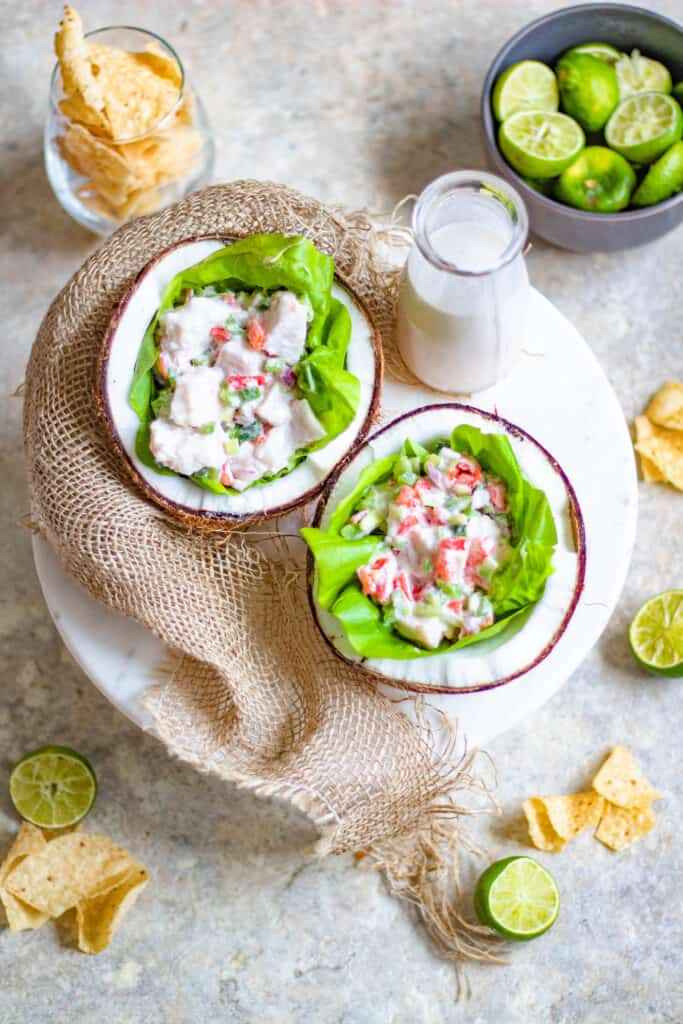
When we ate this dish for dinner, I served it in a bowl with warm jasmine rice.
You can certainly serve your Fijian Kokoda this way, but other great options include serving it with tortilla chips, taco shells, or tostadas. You can also just eat it plain! Here’s a complete list of What to Serve with Ceviche.
In this recipe, I chose to use Mahi Mahi, as it is a mild, easy to find fish. However, this recipe will work with any white fish.
You can also choose to use cod, white fish, or any other white fish available. It is recommended to choose saltwater fish as opposed to freshwater fish as they are less likely to have parasites.
Yes you can! Please keep in mind that the safest, best option is to use fresh, sushi-grade fish for your Ceviche as it is least likely to have parasites.
However, I used frozen mahi mahi for my recipe (and I’m still alive! lol). Lime juice does not kill parasites in the same way that heat would, so if you are using pre-frozen fish, make sure that you trust the source that you’re getting it from.
I simply thawed the fish packages in the fridge for a few hours before starting the process of cutting the fish and cooking it.
Did you like this Fish Ceviche Recipe? If so, make sure to check out these other recipes that I picked out just for you:
- Stuffed Tropical Avocados from Barbados
- Shrimp Soup Recipe from El Salvador
- Fish Soup recipe from Cambodia
- Plokkfiskur from Iceland
- Rainbow Roll

Fish Ceviche Recipe (Kokoda from Fiji)
Equipment
- Knife/Knives
- Cutting Board
- Mixing Bowl(s)
- Wine Opener
- Citrus Juicer
Ingredients
- 12 oz Mahi Mahi, boneless, skinless
- ¾ cup lime juice, this took about 8 limes for me
- ¾ cup coconut milk
- 2 tomatoes, finely chopped
- 1 green pepper, finely chopped
- ⅓ cup Red onion, finely chopped
- ½ English Cucumber, finely diced
- ⅓ cup parsley, chopped
- 1 jalapeño, finely diced
- Kosher salt, to taste
- black pepper (Use code FF20 for 20% off), to taste
- Coconut, optional, for serving
- Butter Lettuce, optional, for serving
Instructions
- Cut the Mahi Mahi into cubed, bite-sized pieces. Place the pieces in a bowl and then cover them with the squeezed lime juice. Cover and place in the fridge for about 6 hours.
- You will know the fish is cooked when the skin has turned white and opaque. You can cut into one of the pieces of fish to make sure that it is this color all the way through!
- When the fish is cooked, add the coconut milk and the diced vegetables. Stir, then season with salt and pepper to taste.
- Spoon into bowls or coconut halves. Enjoy!
Notes
- Mahi Mahi: Use boneless, skinless cuts. Mine came frozen and I thawed them in the fridge before using (see below for info on how to choose safe fish)
- Lime Juice: Fresh squeezed
- Coconut Milk: Canned. You can also use coconut cream
- Traditionally in Fiji, Kokoda is served in the shells of a coconut. This is not required, but certainly a fun choice if you want to go through the trouble! I used Melissa’s Quick Crack Coconut, as the coconut is already prepped and ready for you to open it with just a wine opener and a knife!
- If you’re using Melissa’s Quick Crack Coconut and STILL having a hard time (like I was….) you can also use a flathead screwdriver and a hammer. I used the hammer to push the screwdriver into the already-drawn crack around the coconut. This gave it a starting place so that the coconut was weaker and easy to crack. After pounding in the screwdriver one time, I removed it and then continued to use the knife trick on the rest of the coconut (written on the instructions when you buy the coconut)
- If you are serving in the coconut, make sure to add a layer of green lettuce (I used butter lettuce for a pretty look!) before in between the coconut and the Ceviche for a more traditional look!
- If you are sensitive to citrus tastes, you can drain and rinse your fish from the lime juice before adding the coconut milk if you’d prefer.
- If you don’t like limes, you can replace the lime juice with lemon juice.


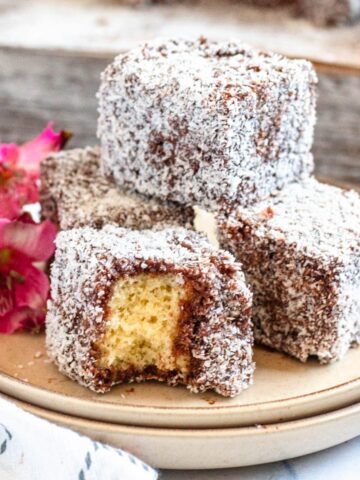
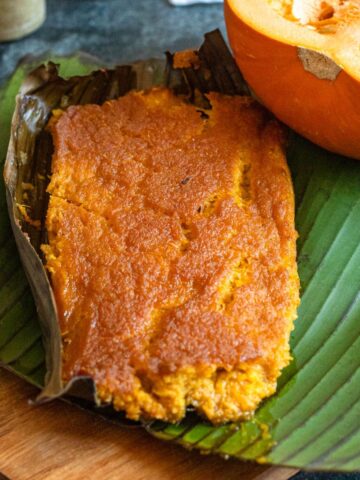
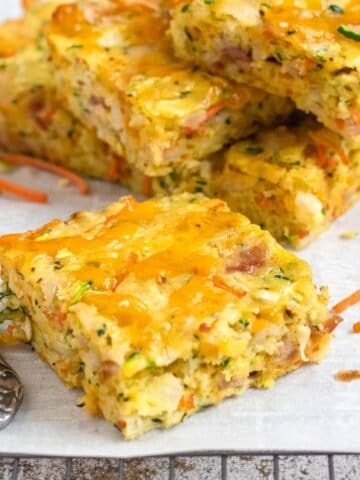
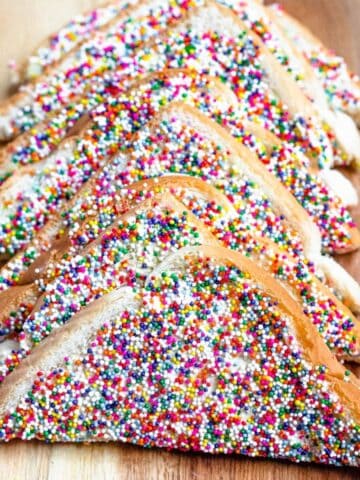


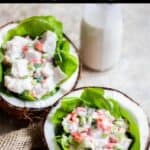
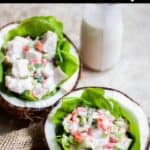

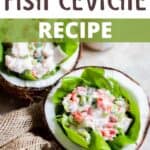
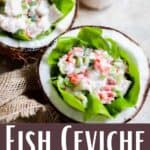
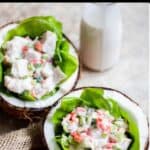
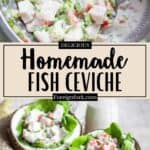
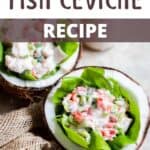

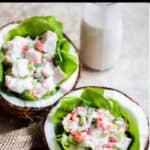
Holly Foster says
I just want to verify that you have to leave the mahi-mahi in the lime juice for 6 hours? That seems kind of long, when most Ceviche recipes say 30 minutes or until opaque. I’m concerned about over cooking it, and I only have one shot.
The Foreign Fork says
Hi Holly,
Yes, I cook mine for 6 hours. You can always check your mahi mahi as time goes on and if it is cooked to your desired doneness, feel free to adjust based on your liking!